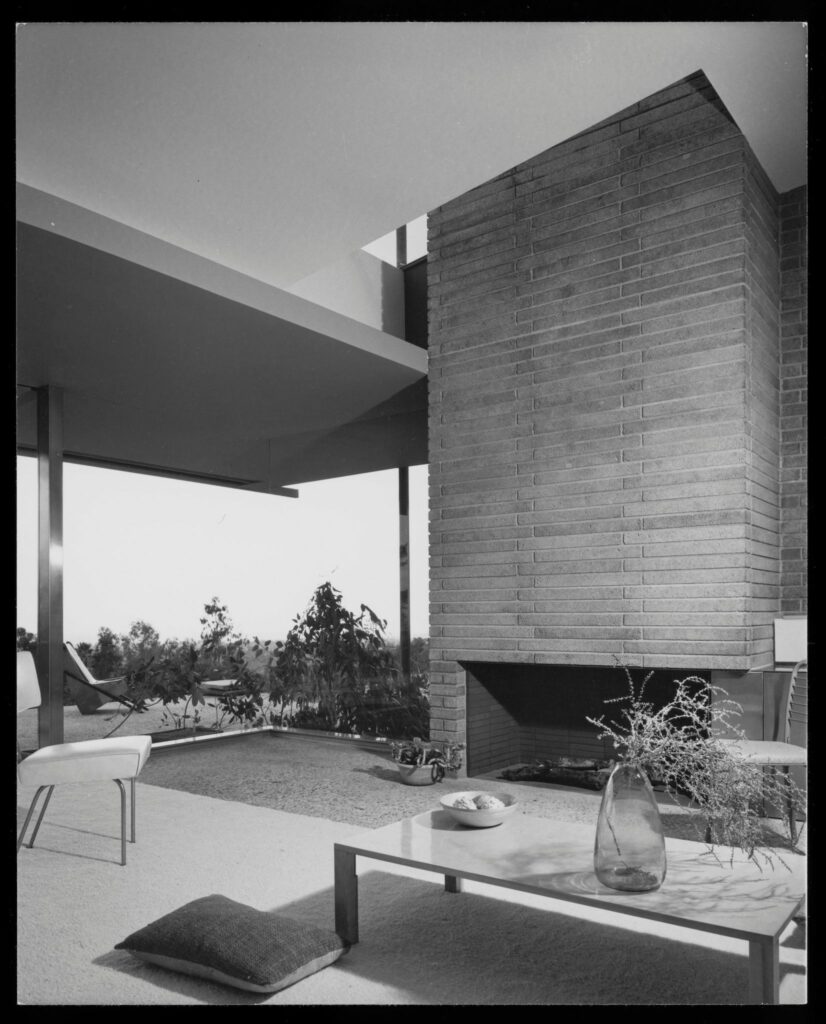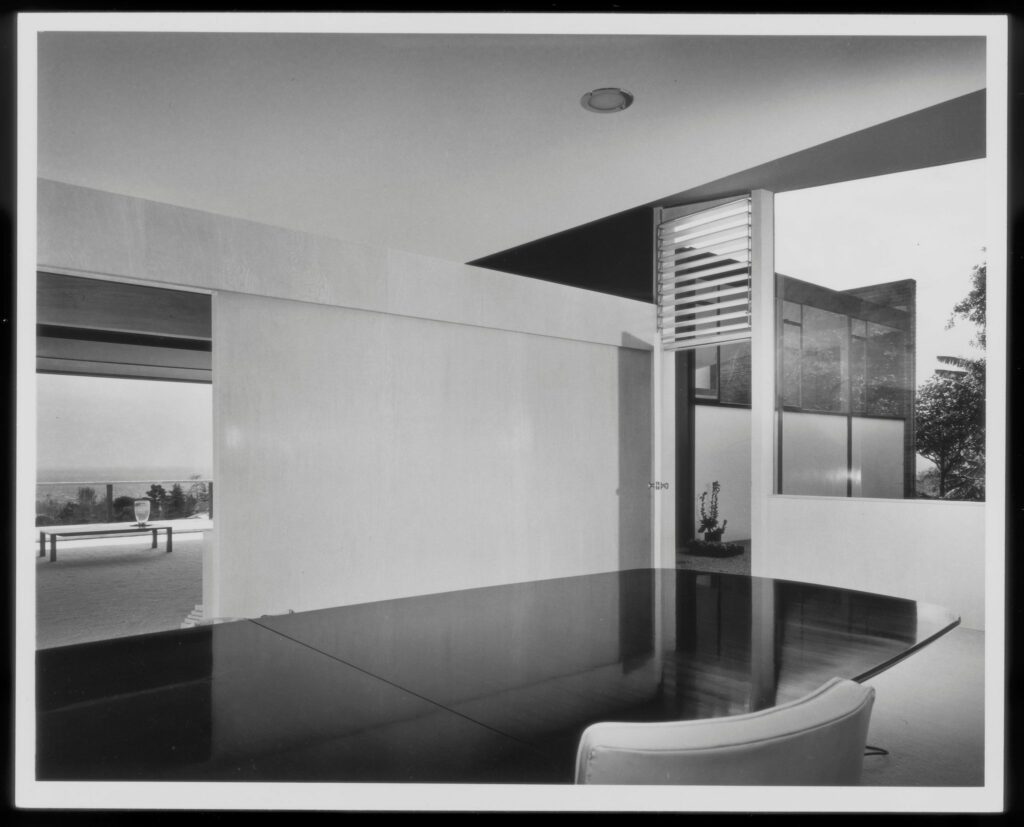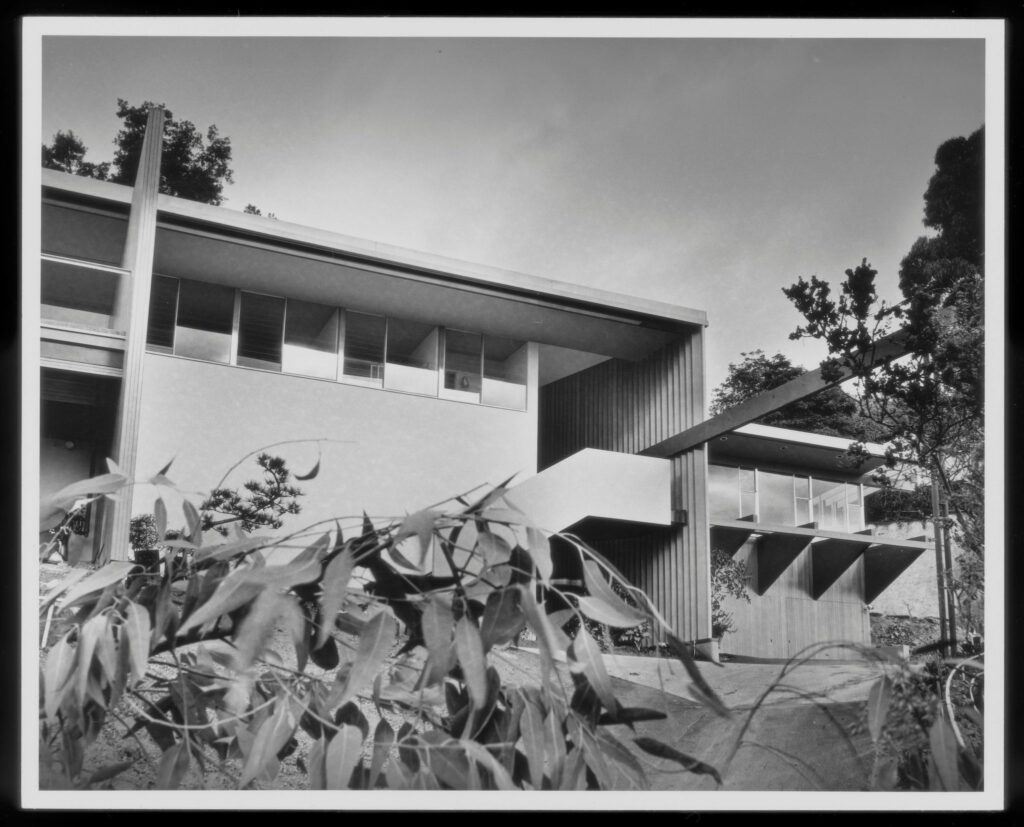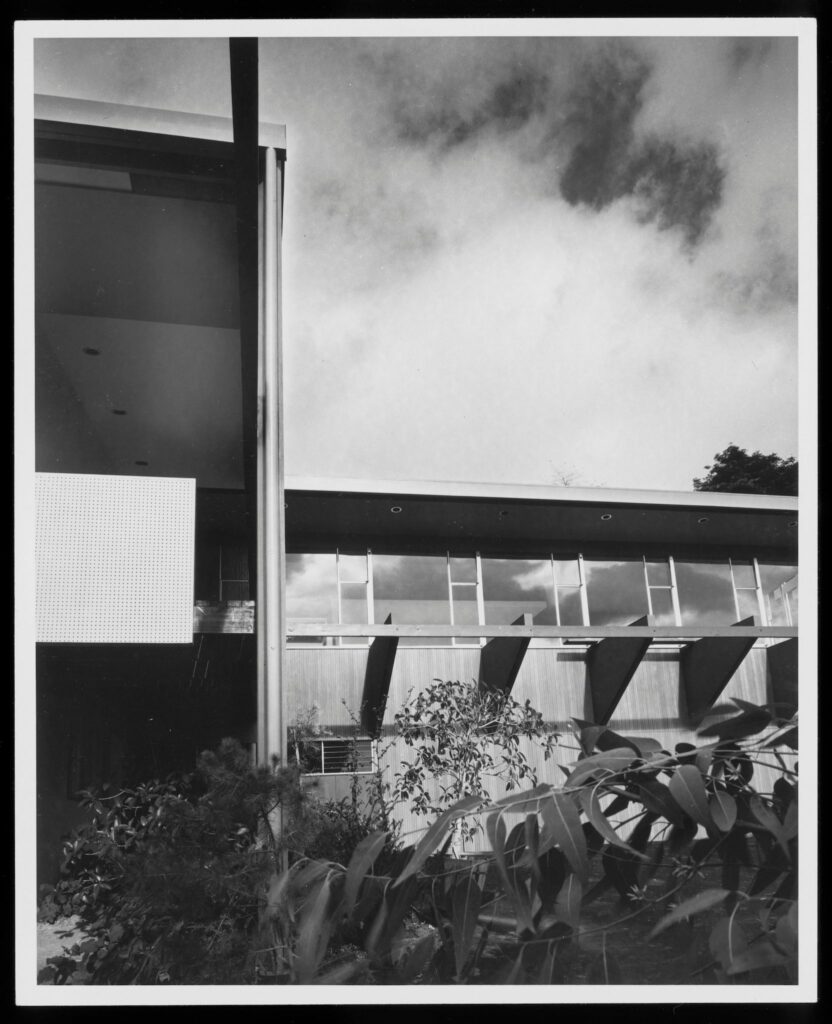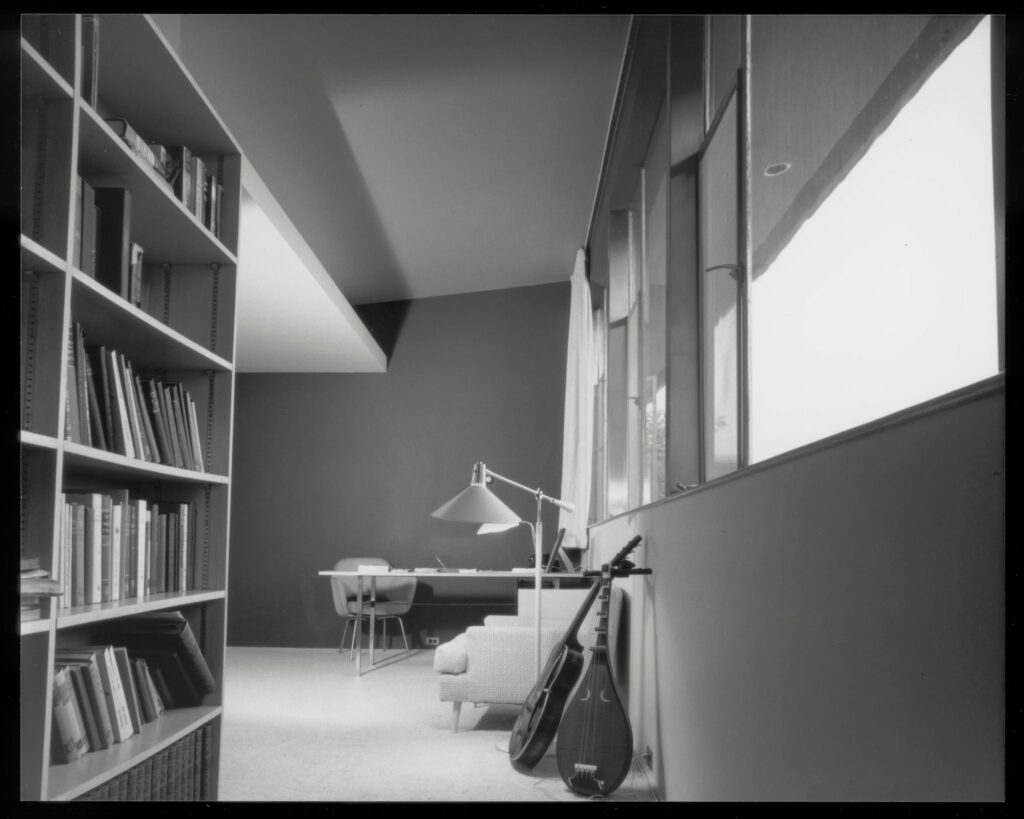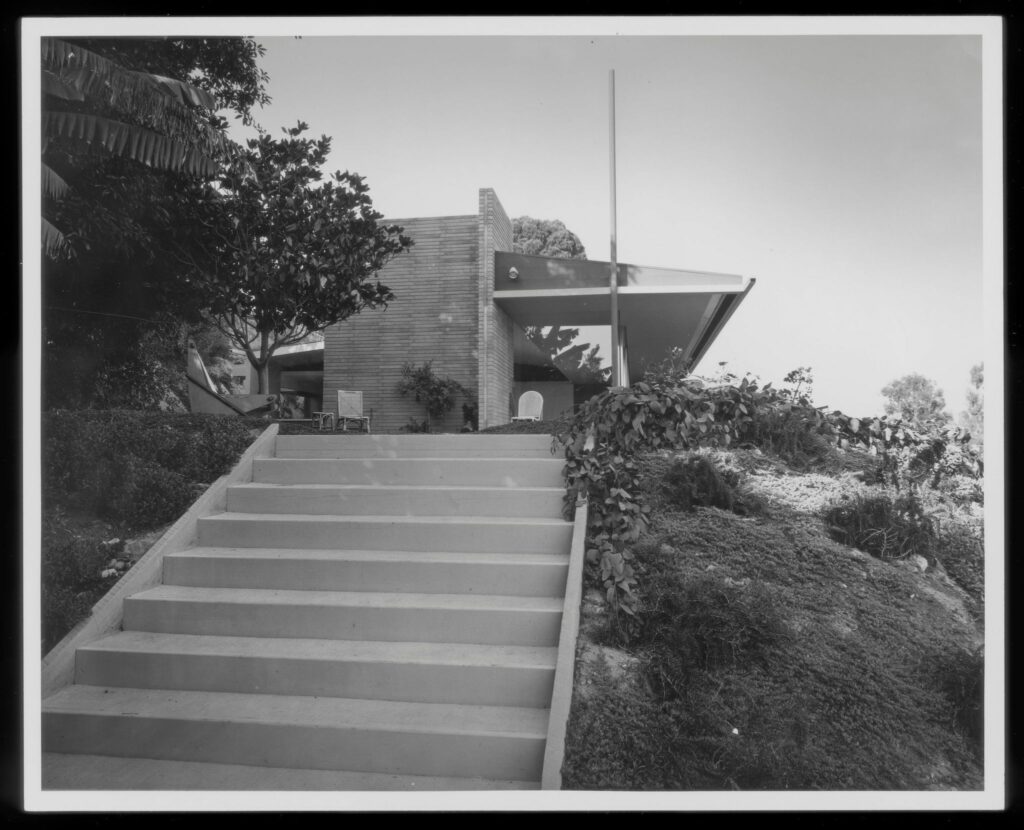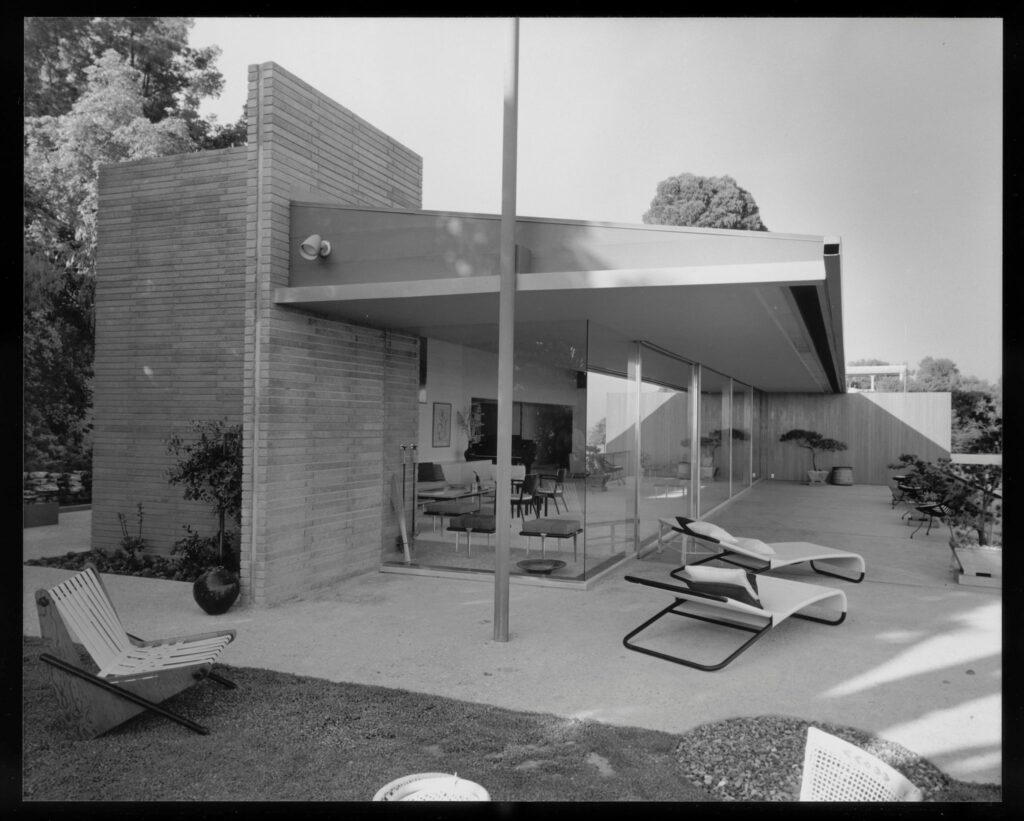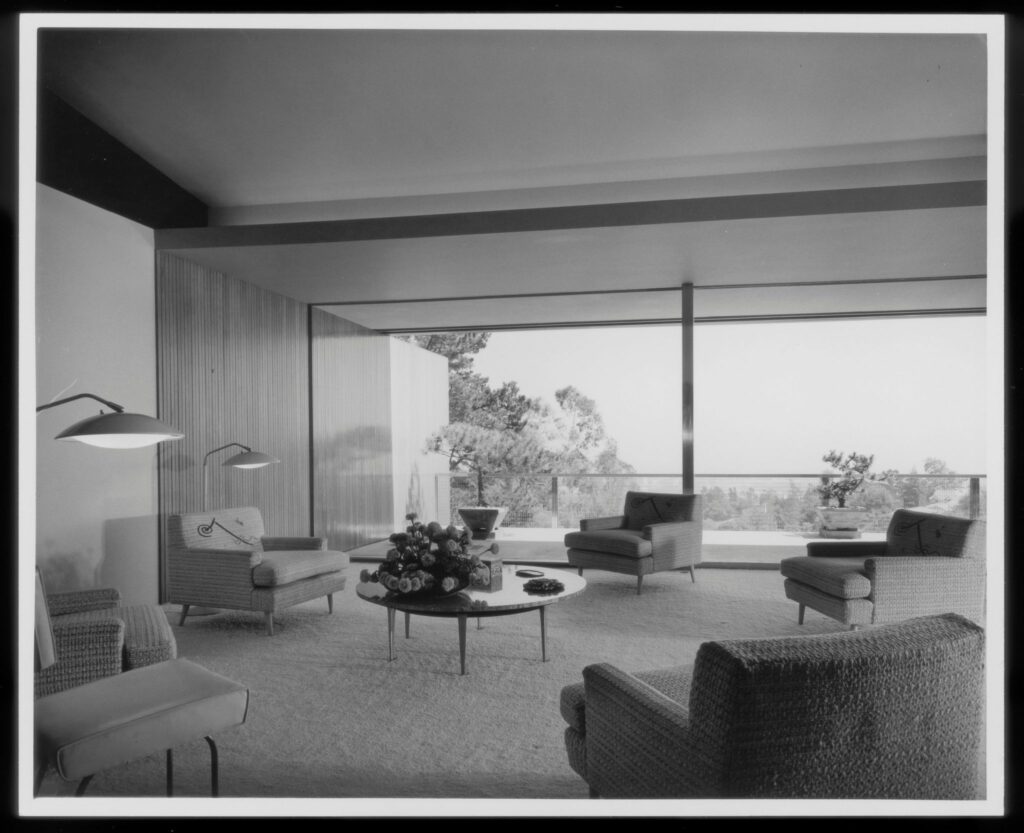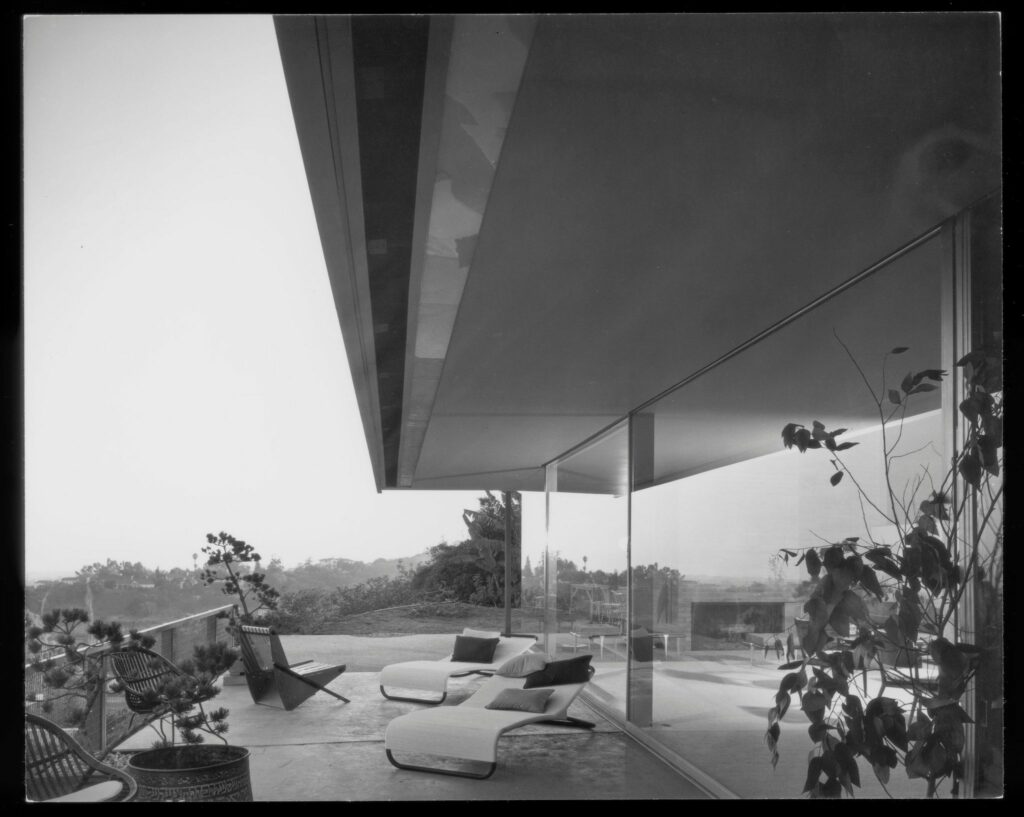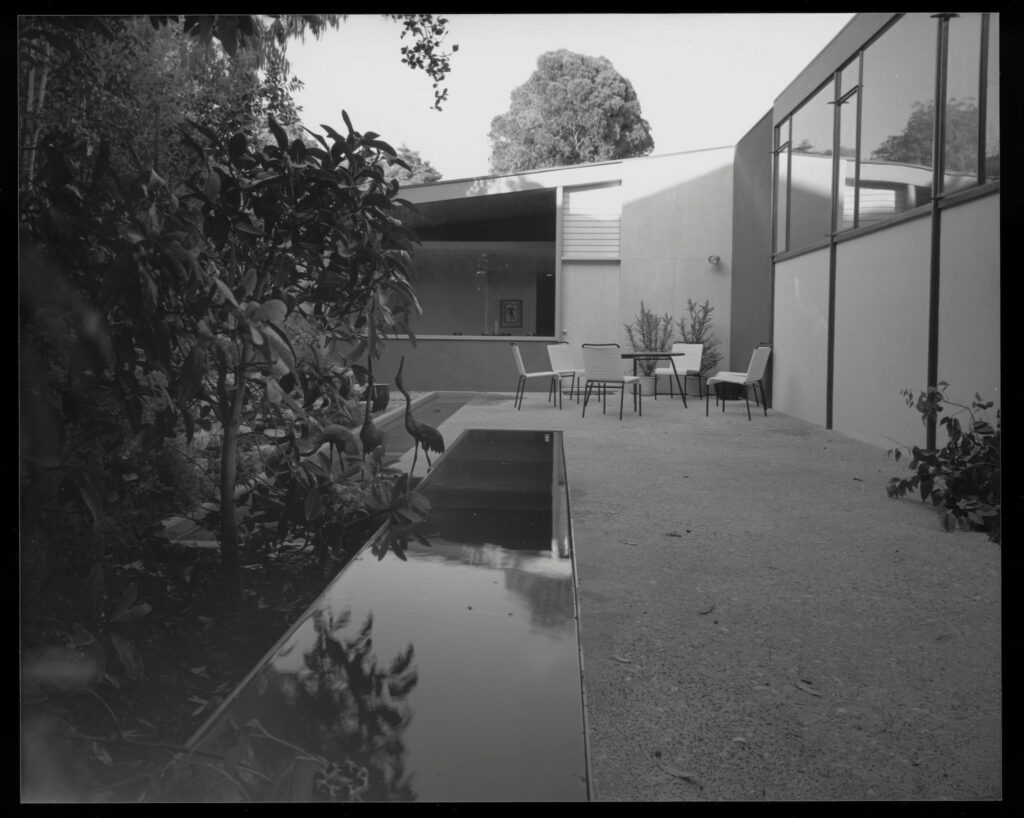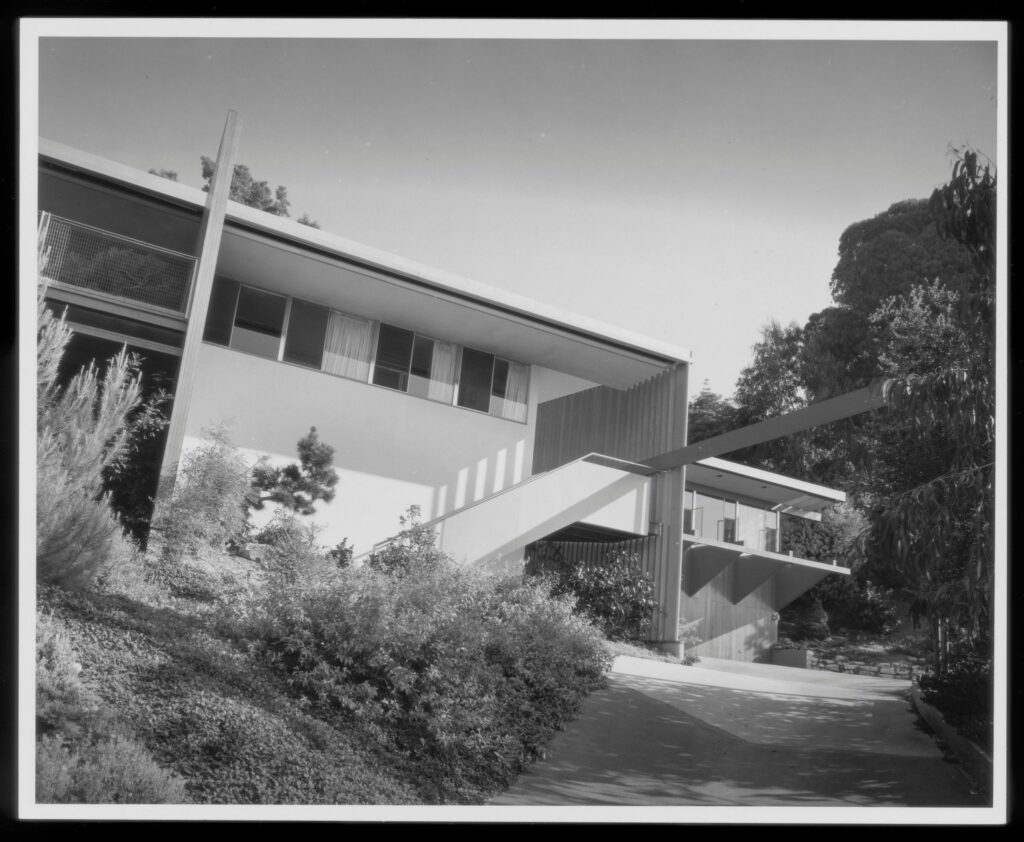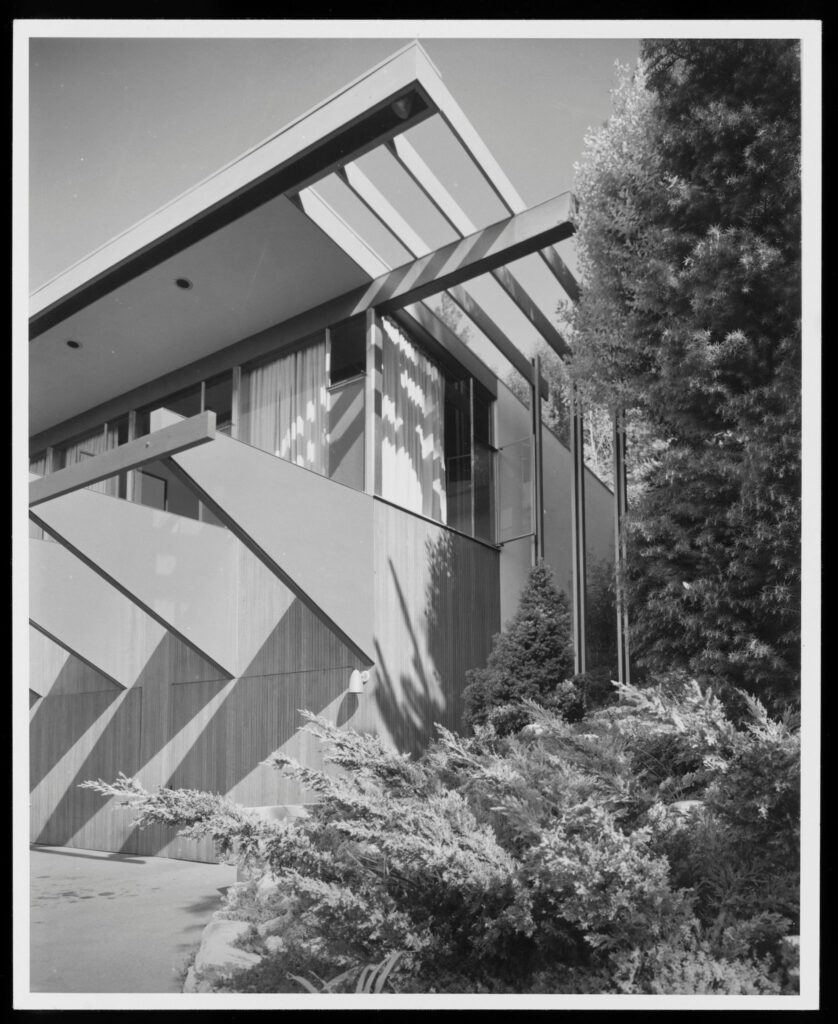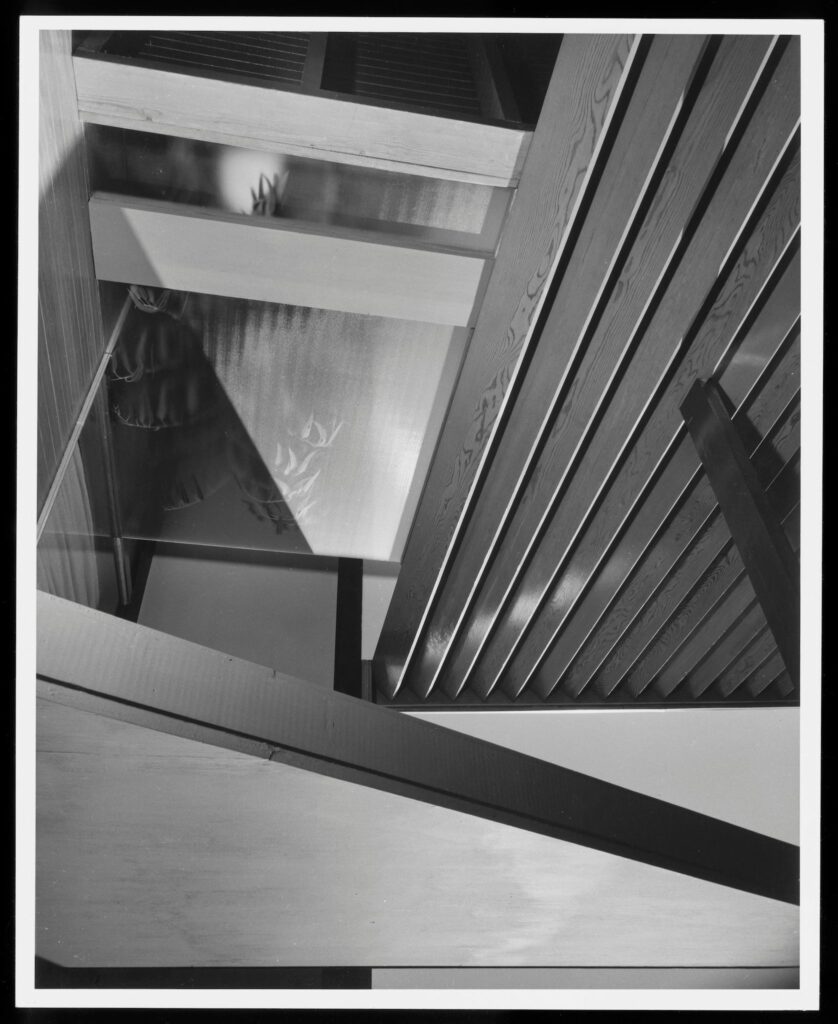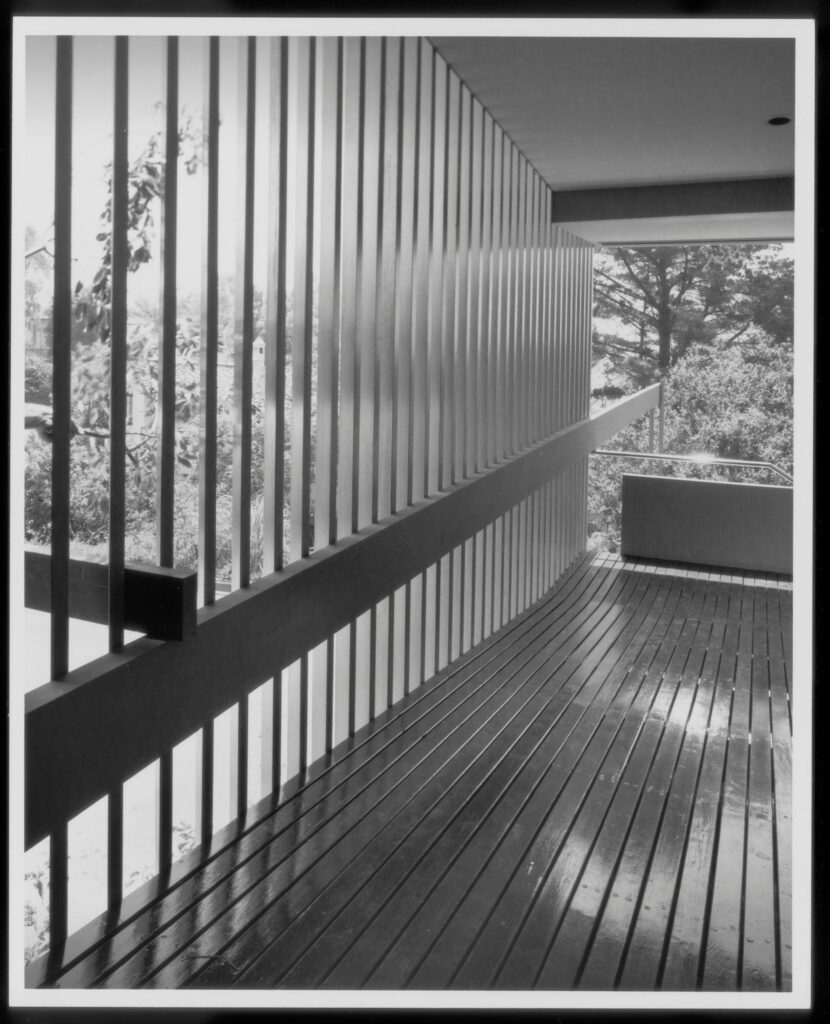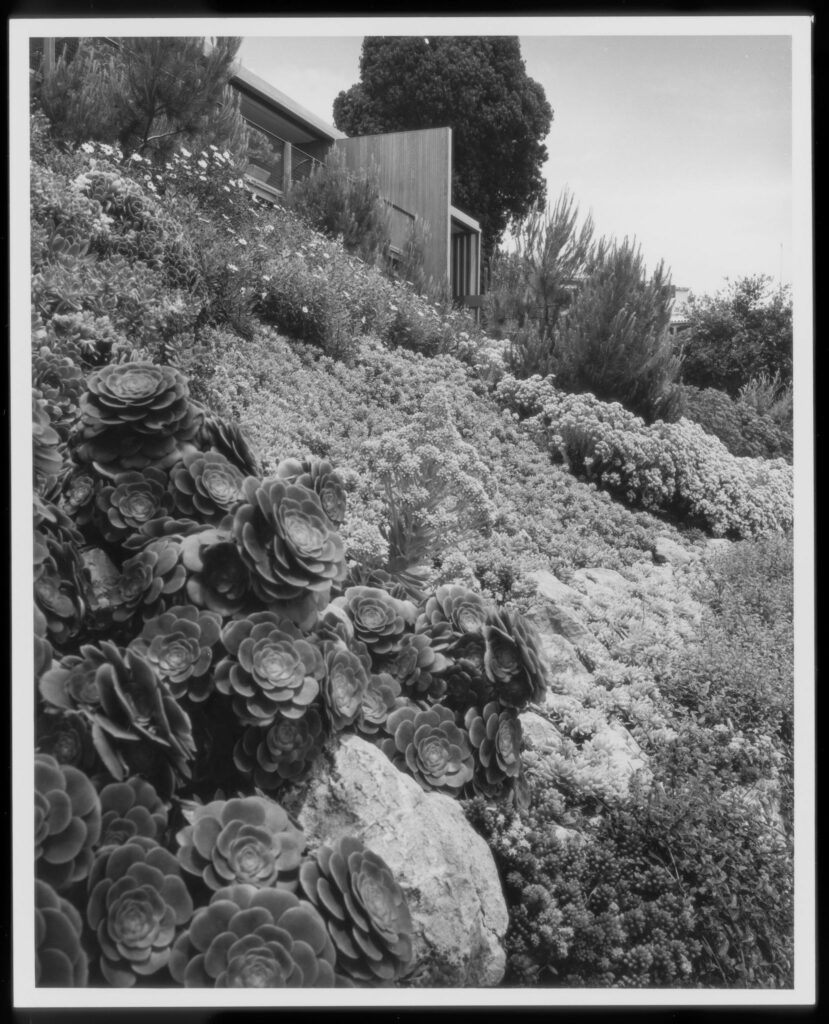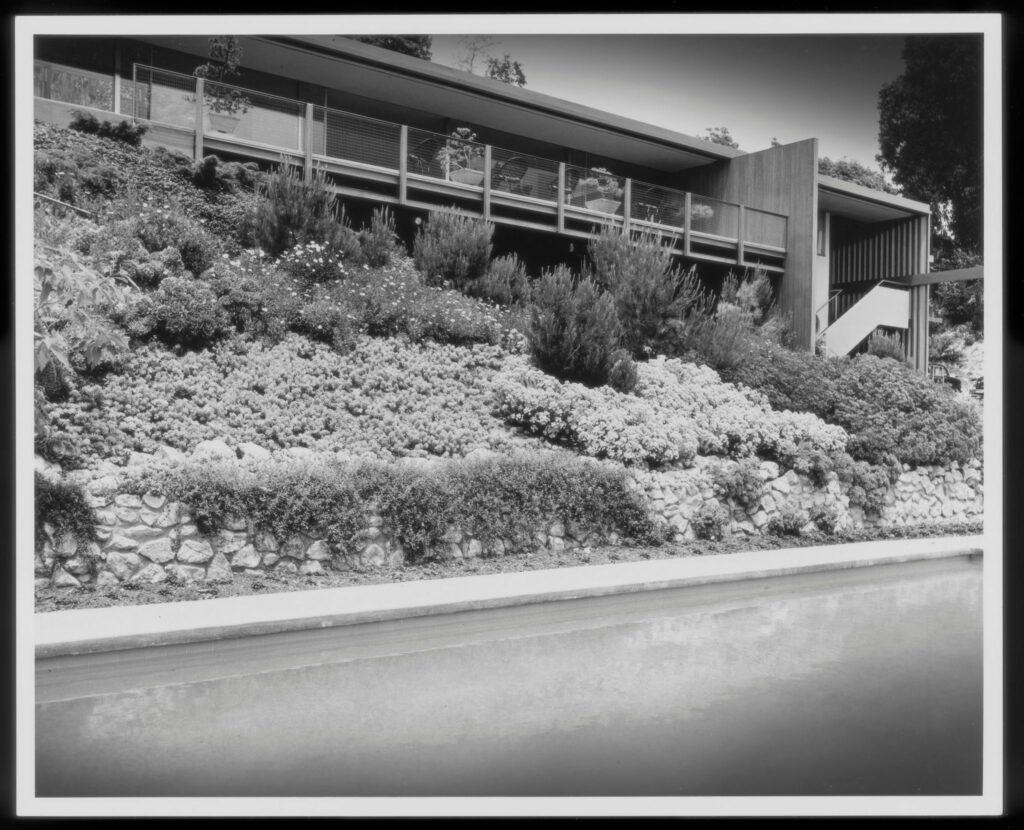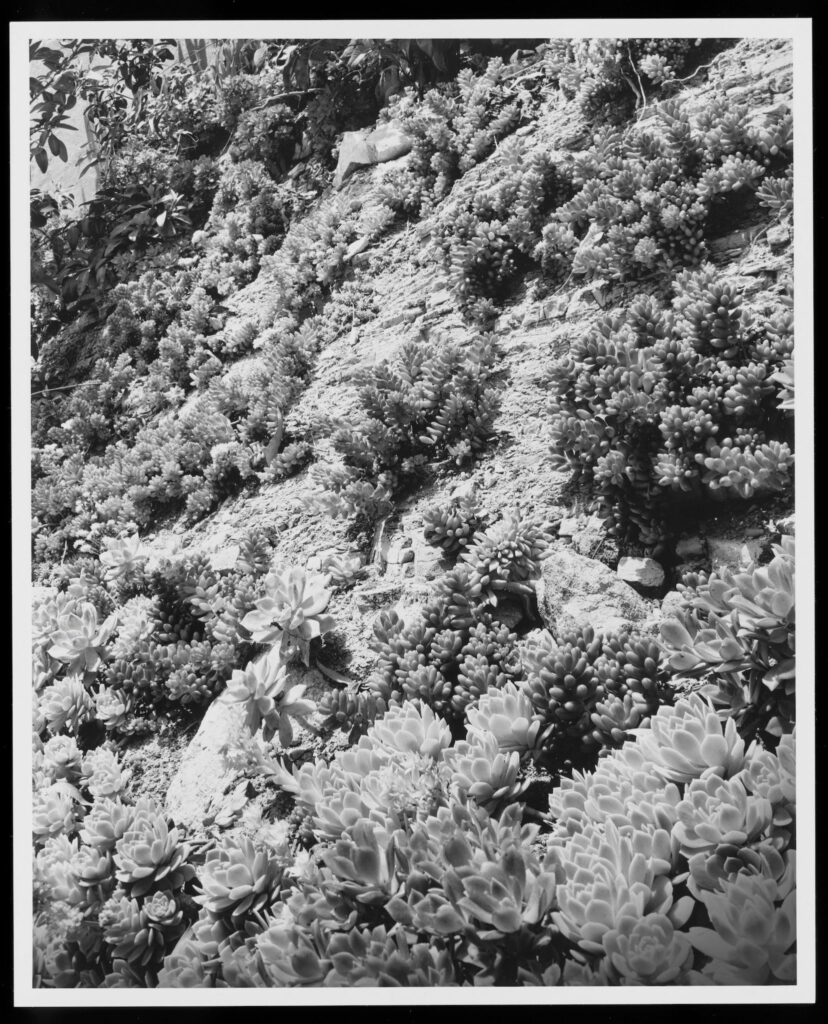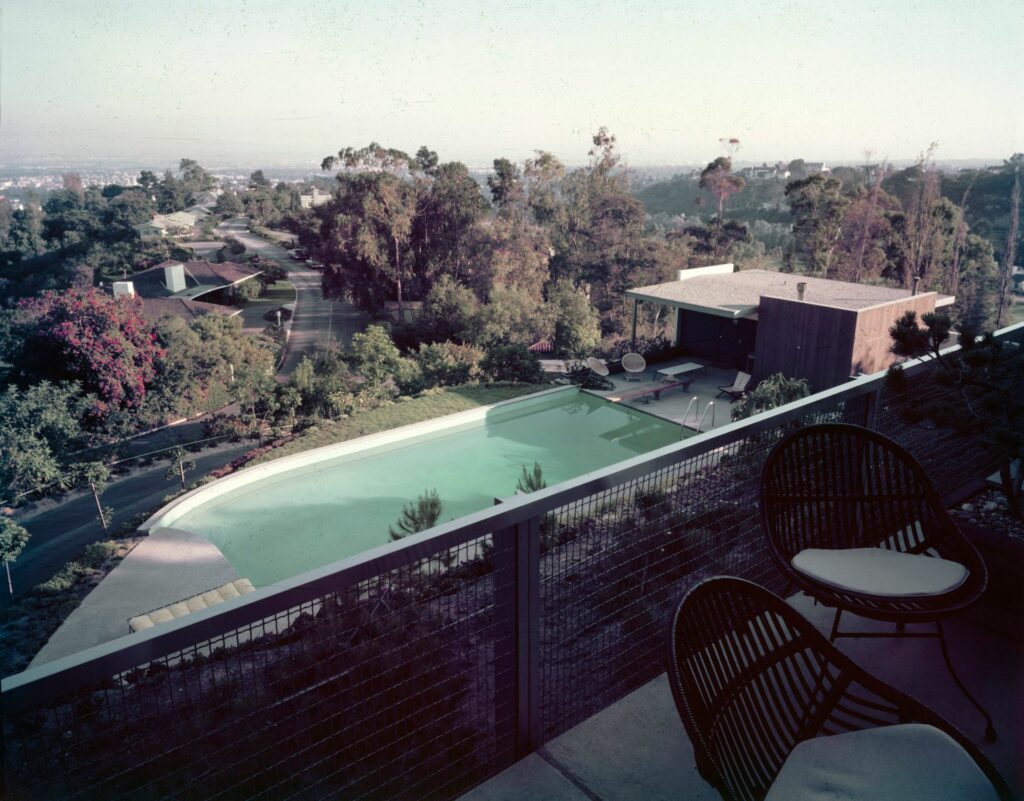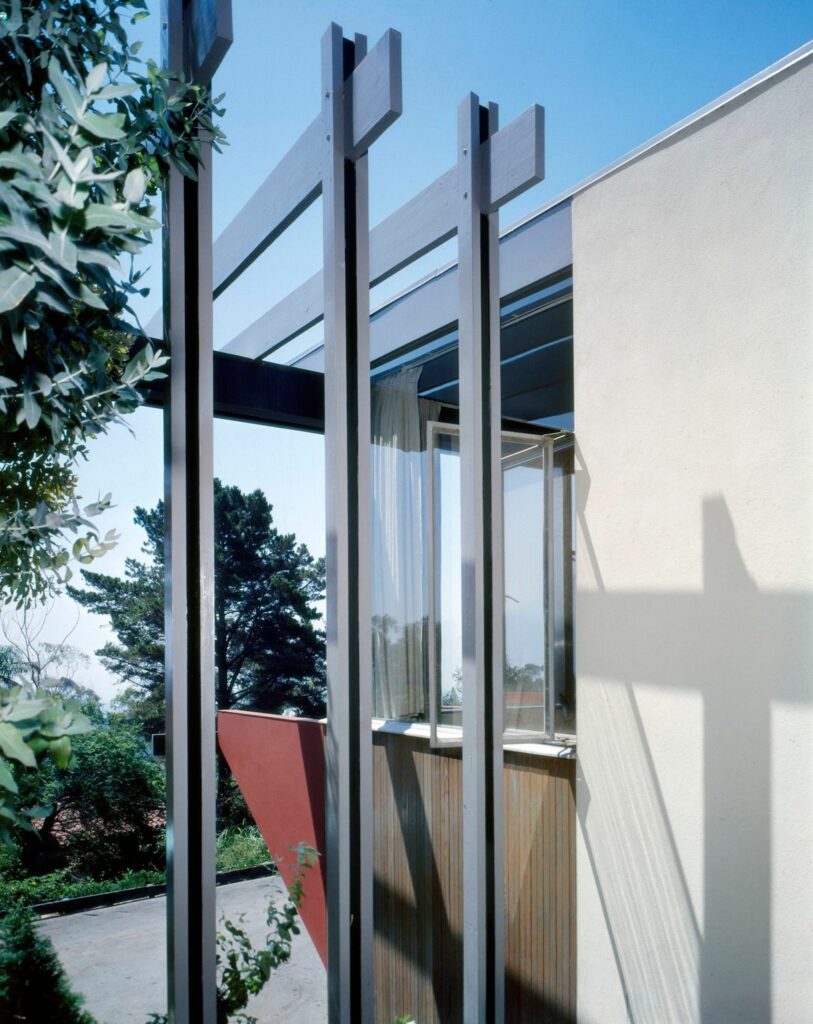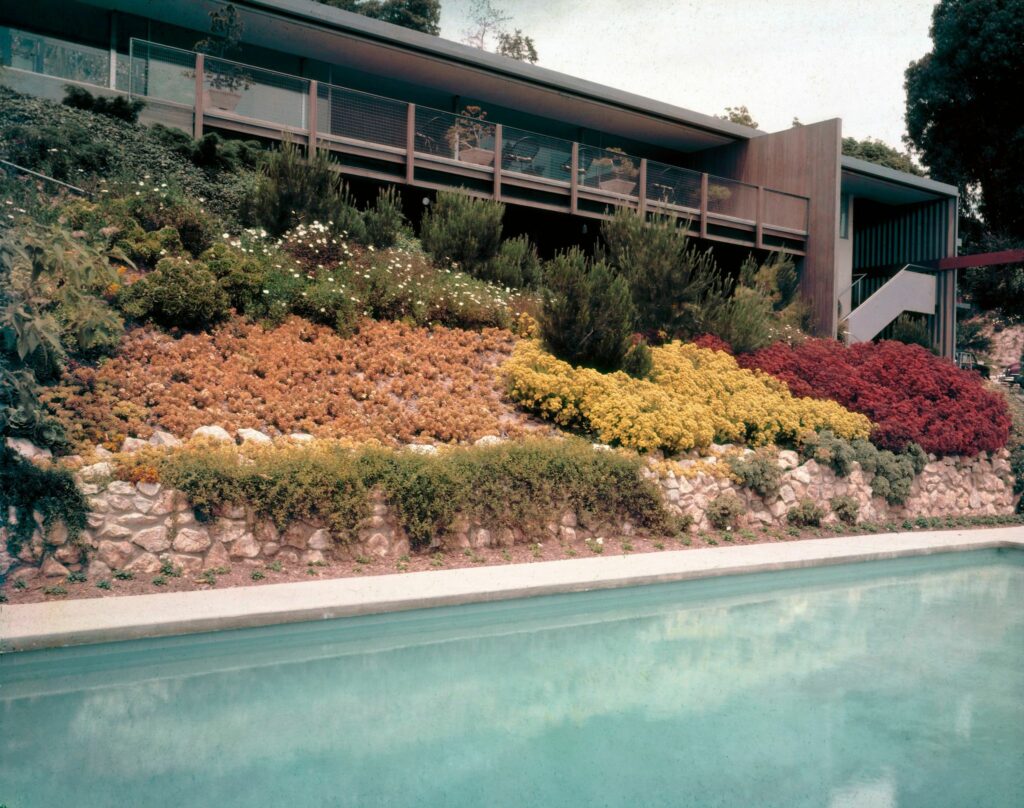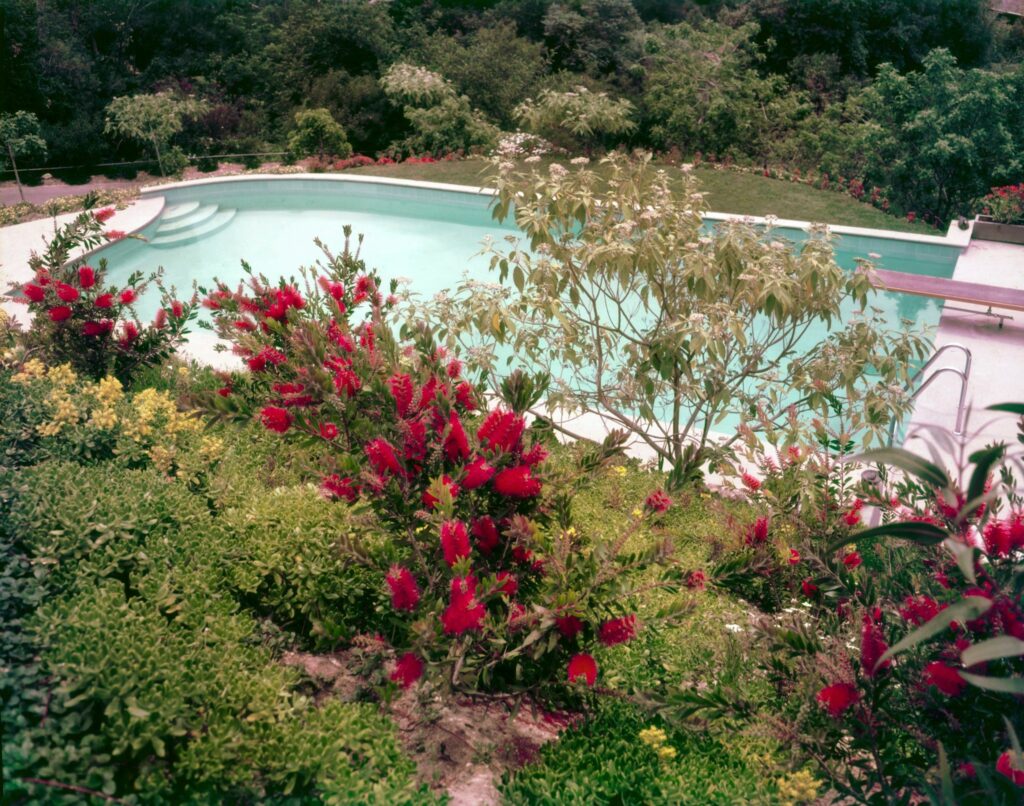Sidney and Sonja Brown House
Sidney and Sonja Brown House
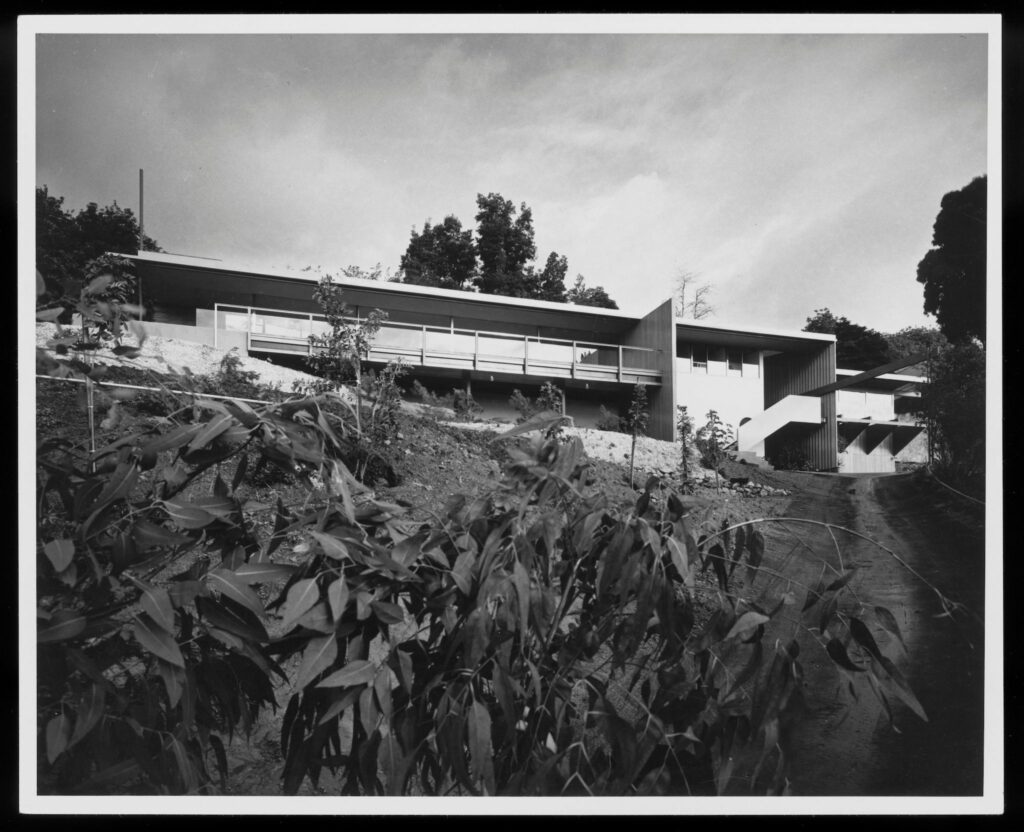
Sidney and Sonja Brown’s home is typical of Richard Neutra’s residential work in the 1950s. While at the start of his career—in the 1930s and 1940s—Neutra had frequently worked for less monied but avant-garde clients, by the 1950s, he was increasingly catering to more prosperous, upper-middle class patrons which gave him the opportunity to combine economical and luxurious materials. Here, Neutra designed a house that followed the contours of the hill.
Visitors enter via a nuanced path that processes to the front door, and a small entry space and hallway open into the living room, the grandest space in the house. The high, gently sloping ceilings reached eleven and a half feet, and the tall, light-brick fireplace punctured this ceiling, serving as the centerpiece of the room. Neutra’s careful attention to the laying of plaster in the living room and on the exterior surfaces outside of it guaranteed that the soffit was surfaced in a uniform color and texture, extending the visual experience of the room beyond its walls.
In order to best integrate spaces, Neutra clad the column between the dining room and living room in stainless steel, “dematerializing” it. Beyond this public area two other areas are defined for private and semi-private use by perpendicular walls that serve as barriers. The main body of the house rests above service areas below. Neutra’s design is most successful in the geometric compositions he forms, bringing positive and negative spaces together within the larger framework of the house. For example, the pool house plays with lines and planes in the use of stainless-steel clad spider legs that project outward from the structure into the wooded hillside below.
Other details demonstrate a keen appreciation for nature such as Dion Neutra’s proposal to transform a standard gutter into an outdoor corner waterfall, which falls alongside a mitered glass corner of the living room into a circle of gravel below. Roberto Burle Marx’s landscaping suggestions encouraged plantings that conformed to a single rhythm but varied by height and color.
Adapted from Neutra – Complete Works by Barbara Lamprecht (Taschen, 2000), p. 280.
Project Detail
Year Built
1955
Project Architect
Richard Neutra
Client
Sidney and Sonja Brown
Location
Bel Air, CA
Related Videos
Photo Gallery
